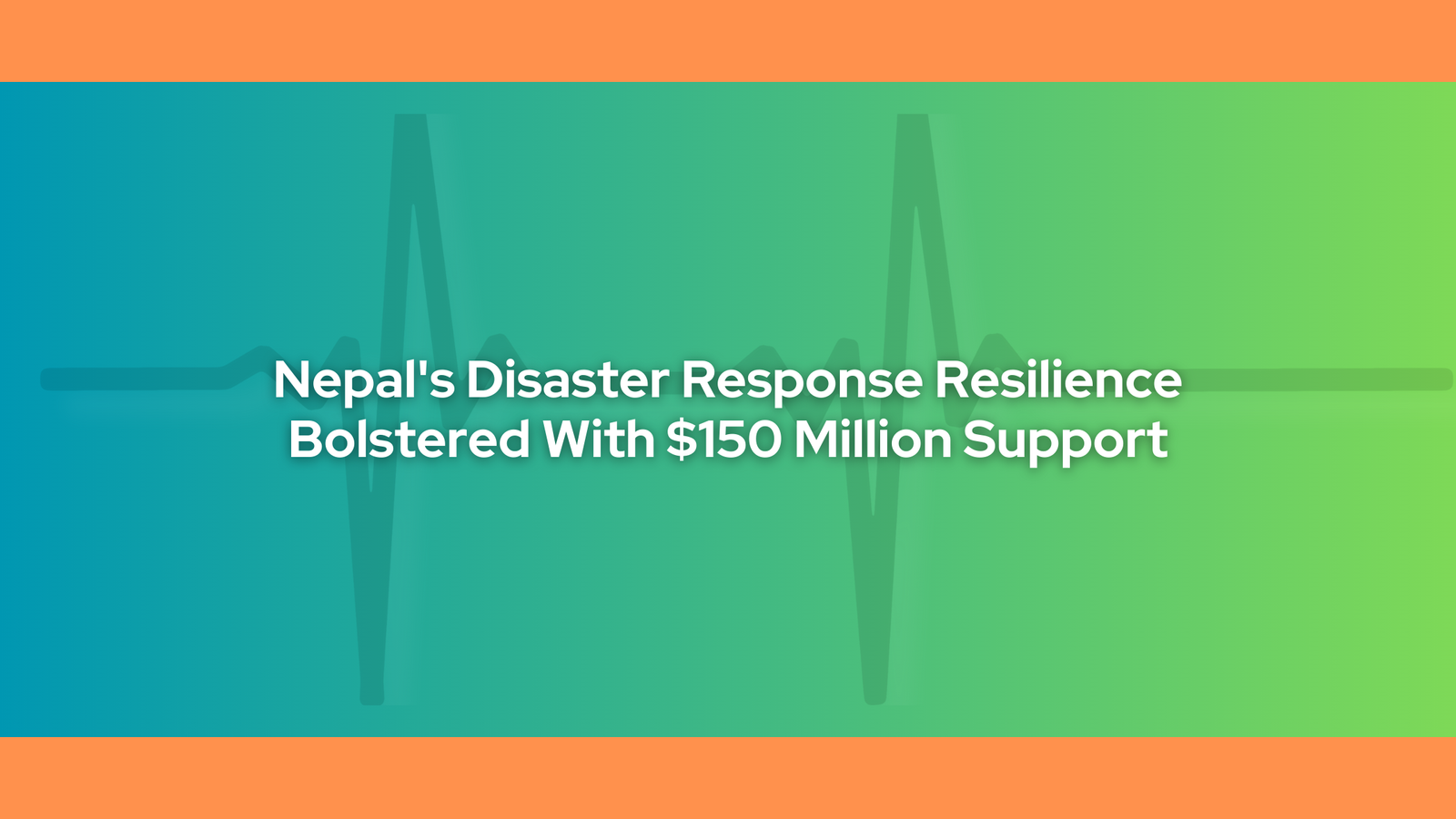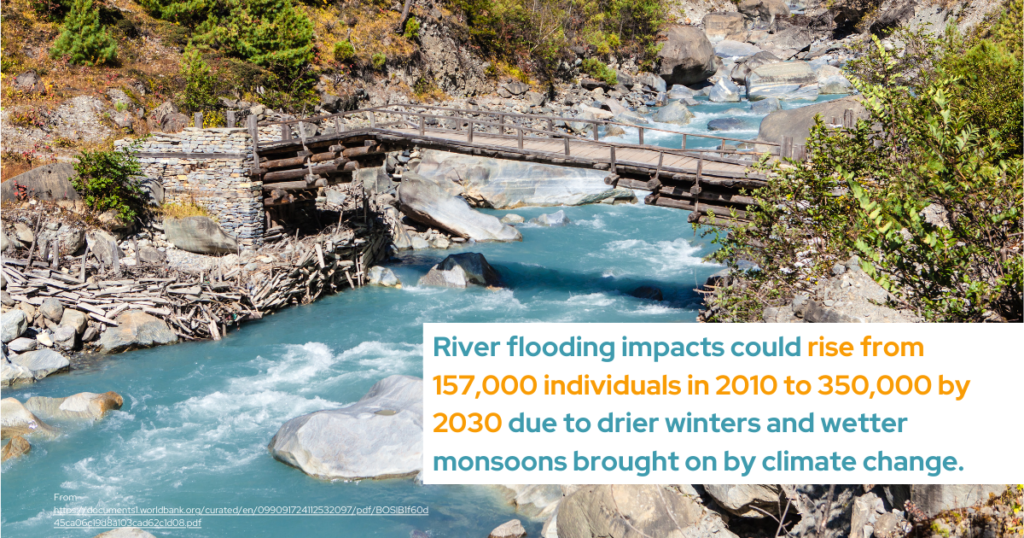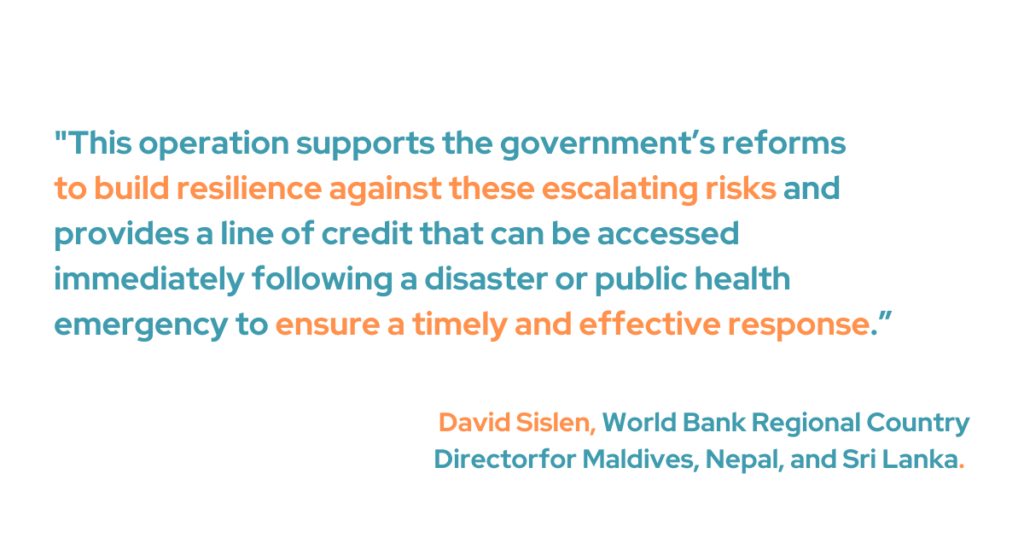
Climate-related disasters are not new in Nepal, as it is one of the most disaster-prone nations in the world. Its geography comprises steep mountainous terrain contributing to severe landslides and flooding. Events like floods, landslides, and glacial lake outbursts threaten the livelihood and development progress in the country. Hence, building Nepal’s disaster response resilience is not only imperative with the current impacts of climate change but also to ensure the Nepali people of the country’s sustainable developmental goals.
To bolster Nepal’s disaster response and resilience, the World Bank approved $150 million in contingency funding on Oct. 8, 2024, to address the country’s vulnerability to natural disasters or health catastrophes. Under the Nepal Disaster Resilience Development Policy Credit with Catastrophe Deferred Drawdown Option (Cat DDO), the government can help itself by responding more effectively to crises and building its infrastructure and communities for the long term.

The Cat DDO supports legislative and regulatory changes to improve disaster resilience and fortify institutional structures for efficient disaster response. It also helps the government develop the institutions, policies, and regulatory frameworks required for risk reduction, risk-informed investment in vital infrastructure, and enhanced readiness for public health emergencies. The initiative also prioritizes outcomes, which include disaster risk reduction, which aims to lessen the effect of calamities and limit the loss of lives and property.
The government has an additional disaster response and recovery strategy tool with contingent financing via the Cat DDO. This offers access to instant money in the wake of a disaster. Nepal’s three-tier federal structure depends on post-disaster disaster response and rehabilitation resources.
According to the program document, Nepal is the second most vulnerable nation in the world to mortality threats from numerous hazards because of its geographic and geological characteristics. From natural disasters and impacts of climate change to outbreaks, these events have threatened the country’s sustainable growth. In November 2023, a 5.7-magnitude earthquake hit Jajarkot District. This earthquake is the deadliest one since 2015, killing 153 people and costing more than $500 million in damages.
The United Nations’ 2022 compendium on Nepal’s climate indicators states that the nation is already experiencing the effects of changing weather patterns, which cause extreme weather events in certain places and water scarcity in others.
In addition, these natural disasters harm infrastructure and lower economic output in the country. In April 2024, a significant wildfire resulted in fatalities, structural damage, and a decline in air quality. River flooding impacts could rise from 157,000 individuals in 2010 to 350,000 by 2030 due to drier winters and wetter monsoons brought on by climate change. According to analysis, the detrimental effects of floods on constructed infrastructure may be responsible for over half of the nearly 7% GDP decline anticipated by 2050.

Natural disasters cause Nepal to suffer significant socio-economic losses every year. For instance, monsoon floods devastated the Koshi Province in 2023, which caused major economic damage and disrupted hydropower installations.
“This operation supports the government’s reforms to build resilience against these escalating risks and provides a line of credit that can be accessed immediately following a disaster or public health emergency to ensure a timely and effective response,” said David Sislen, World Bank Regional Country Director for Maldives, Nepal, and Sri Lanka.
An inventive catastrophe risk funding tool, the Cat DDO would enable the government to swiftly address urgent requirements without taking funds away from its continuing development initiatives. It will support the government’s current response programs, including the Prime Minister’s Disaster Relief Fund and the National Disaster Management Fund.